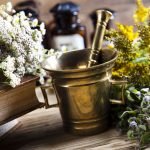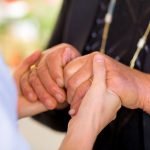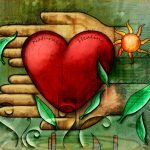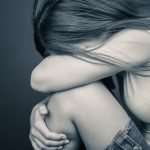Can the Mind Heal the Body?
Sussanna Czeranko, ND
“Health implies and exhibits the presence of perfection of bodily function along with pleasant passage through life in a particular state of perfection better known as happiness.” – Nora E. Thrash (1927, p. 580)
“A belief in good, or the all-prevalent Principle of Life, is the foundation rock of a world’s salvation from error, sickness and death.” – Helen Wilmans (1921, p. 41)
“This life force, which flows into us from the one great source of all life in this Universe, from that which we call God, Nature, Creative Force or Universal Intelligence, is the primary source of all energy from which all other kinds and forms of energy are derived. It is as independent of the body, and of food and drink, as electric current is independent of the glass bulb and the carbon thread through which it manifests as heat and light.” – Henry Lindlahr (1918, p. 27)
Can the mind heal the body? This was the question on the lips of our elders a century ago as they witnessed allopathic medicine exploding all around them. Today, as NDs, we value mind/body medicine and know intuitively that there is a unique relationship between the principles of naturopathy and our view of the healing process. The idea that diseases can be overcome if the right mental attitudes are adopted is neither new nor foreign to us. As a case in point, E. Dickenson asks readers, “Can the mind heal all diseases? (Dickenson, 1920, p. 140). Dickenson provides an immediate and emphatic, “yes, the mind can and does heal all diseases” (p. 140).
These early 20th-century views were preceded in the late 19th century by spiritual movements emphasizing metaphysical beliefs that promoted positive thinking, the law of attraction, affirmations, healing life force, creative visualization and personal power (Lewis, 2004). The naturopathic community learned about and brought forward into a new century beliefs of these spiritual trends. Several early naturopaths were prominent advocates of these notions and have left an indelible legacy for others to follow. Dickenson, for example, cites several people and movements in which severe diseases were cured by the “unlimited control of the mind over the body” (Dickenson, 1920, p. 140). This period is also marked by champions of the New Thought movement, such as Helen Wilmans, the “mother of mental science.” She healed persons in her presence and at a distance simply by the power of thought and prayer (Dickenson, 1920). Today we continue to study the power of prayers in healing as evidenced by current scientific research that occasionally generates mainstream headlines (Leibovici, 2001; Stein, 2006; Wilson et al., 2000).
Wilmans designed a 20-lesson course (published by Benedict Lust in 1921) made available by mail order. Lust writes in the forward to Wilmans’ book, Mental Science: “Every student or seeker of health, and every drugless practitioner needs a working knowledge of mental science” (Wilmans, 1921). She was a powerful teacher of the New Thought movement, which promoted the power of mind over matter. She advocated learning the power of affirmations. She asserted, “The first thing for us to make manifest out of the universe of all-good is health” (p. 89). She gave affirmations to her students and patients, such as, “All is good, all is life. Let this truth take hold upon you; dwell upon it constantly; work over again every problem of your life by it” (p. 92). She speaks with kindness to her students, “Dear student … try and believe with all your strength that all is good. Assert it mentally and keep asserting it” (p. 92).
Contemporaries such as Purinton, a frequent contributor to the Naturopath Journal, added to this burgeoning literature. In his article “Feeding the Mind” (1919), he talks of the ‘mental scientist’ who “bids us ‘hold the thought’ of love, truth, beauty, kindness, purity, power or any other trait to which we aspire” (p. 73). For him, “feeding the mind is more important than feeding the body. The mind never grows old; it is fresh and young and powerful so long as we nourish it properly” (p. 73). To feed the mind, he adds that choosing our thoughts with care and practicing meditation bring “balance and assimilation.”
MK Garrick wrote eloquently of ”soul culture” in this regard, explaining that “each soul is a complete intelligence which contains all” (1920, p. 11). Even as early as 1902, Ludwig Staden insisted that “the power of healing is within us; nature only, nature alone, solves the problem …” (Staden, 1902, p. 16). Staden explained that matter was “changeable,” reporting that “the continuity between molecular processes and the phenomena of consciousness is the rock upon which materialism must inevitably spilt whenever it pretends to be a complete philosophy of the human mind” (p. 15).
Wilmans’ advice to healers affirms Purinton’s ideas. She asserts, “The healer has to believe in his own creative power before he can heal successfully in all cases” (Wilmans, 1921, p. 333). She continues, “It is by thought that we heal. If my thought is grounded in the belief that all is good, or that all is life, it is positive to your thought.” (Wilmans, 1918, p. 475). “Our very best and true and noblest thought is worthless unless it is led forth into activities. The whole tendency of the will – which is the soul of things – is to externalization. …The personal condition of man is the conditions to aspire to … to make the will manifest in acts” (1921, p. 317).
These early pioneers of mind/body approaches continue to attract us. Stein writes, “In the United States, prayer is the most common complement to mainstream medicine, far outpacing acupuncture, herbs, vitamins and other alternative remedies” (Stein, 2006, p. AO1). Today, the long-distance healing of Wilmans is described as ”intercessory” and supported by the U.S. government, which has spent more than $2.2 million in the past 5 years on studies of distant healing. Yet, Wilmans and many others paid heavily for their beliefs in prayer as a healing. She was “indicted on a charge of ‘fraud,’ [her accusers] contending that her claim of cure by absent treatment was necessarily fraudulent because it was impossible to be done.” Her success was with a heavy toll and she endured years of persecution, suffering the financial ruin of her publishing enterprises and schools. Today, by contrast, Deepak Chopra enjoys much freedom.
Indeed, throughout this period, many people wrote books on the subject of mental healing. Numerous patients disillusioned with the ineptitudes of the medical regulars would follow these practitioners who claimed to heal with their hands. Among these contributing to the community was another prominent healer, Sydney A Weltmer. He cured blindness, paralysis and tuberculosis by the power of suggestion and founded a school, the Weltmer Institute of Suggestive Therapeutics in Missouri (Weltmer, 1922, pp. 1-225). Weltmer helped thousands of people recover from incurable diseases and deformities. In his book, Healing Hands, he discusses the laying on of hands, and suggestion through the written and spoken word and through telepathy. His “system of suggestive treatment [aimed] to bring the mind and the body into harmony” (1922, p. 146). Weltmer believed that man was omnipotent and that knowledge was power. “My purpose in life,” he wrote, “is to impart this knowledge to the world and teach men what I know” (p. 149). If the therapist knows how to give the right suggestion and get the right response from the patient, there is nothing that cannot be cured (p. 60). “With the suggestive therapist, the movement of the mind, called thought, is the remedy … The vehicle through which this movement or remedy [the thought] is transmitted from the mind of the therapist to the patient – whether it be by the laying of hands, vibratory manipulation, written statement, spoken word or telepathic vibration – is suggestion” (p. 60).
Controversy Over the Mind’s Healing Power
Not all of the Nature Cure practitioners shared the same enthusiasm for the healing power of the mind. Dr. William Havard, a frequent contributor to The Naturopath and possessing a strong position for scientific reasoning, believed that the human body is governed by the universal laws of nature. Those who “invoked the ‘higher law,’ the ‘supernatural law’ … to absolve him from consequences and punishment is only deluding himself and putting off retribution for a day” (Havard, 1918, p. 229). Havard believed, “if you are unhealthy because of unnatural living, you cannot think yourself into health and at the same time continue to abuse the body” (p. 230).
The complex links between spiritual/mental life and the body were also well documented by another famous doctor, Henry Lindlahr. As a young man, Lindlahr wrote, “My only concern was the gratification of my physical appetites and of my desires for diversion and amusement. The first part of my life … was a sort of experiment to see how far I could go in the violation of the rules of wholesome living without suffering immediately and drastically nature’s penalties” (Lindlahr, 1918, p. 21). Discovering a book on Nature Cure changed his life forever: “I saw in the final analysis all that which we call sin, disease, suffering or evil is identical in origin and nature; that all of these abnormal and undesirable conditions are due to violations of nature’s laws, and that therefore the only possible, permanent cure there can be lies in a return to nature, and in compliance with her fundamental laws and principles” (p. 23).
Lindlahr even provided us with a taxonomy of violations of nature’s laws:
- Lowered vitality
- Abnormal composition of blood and lymph (mainly through wrong eating and drinking)
- Accumulation of waste, morbid matter and poisons in the system
- Abnormal … discordant or destructive mental and emotional attitude (p. 123)
Even though Lindlahr took issue with some of the mind healers, such as those following the Christian Science doctrines, he believed that “disease was not a figment of a diseased imagination, but the result of violations of nature’s laws” (p. 130). Or, as his contemporary, Purinton, put it, “For any action, nature’s penalty or reward is simple re-action” (Purinton, 1920, p. 171).
A bit later in that same decade, Dequer commented, “Fear thoughts, through their secretion of adrenalin, curtail digestion, and at this point do not forget that worry, as Dr. Lindlahr has so well said, is nothing more than chronic fear. If you cannot help worrying whether a leaf of spinach will scratch the eyes out of a tomato when they meet in your stomach, or whether an apple will commit hari-hari when it meets a piece of bread on its way to build the cells of the body, then you are creating the very conditions you are eating to correct” (Dequer, 1926, p.195).
Clearly, early teachers wanted us to understand the particular and powerful link between mind and body. To the extent that Wilmans created an entire curriculum around these notions or that Lindlahr, Weltmer and others affixed the principles to complete narratives about the extraordinary therapies available for the nature cure doctor, the inextricable bond between mind and body has become a pillar of our medicine, as valuable in this century as it was in the last.
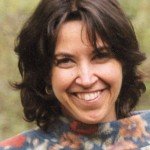 Sussanna Czeranko is a licensed naturopath in Ontario and Oregon. She is currently a faculty member at NCNM conducting historical research in its rare books room. She is applying these studies to the creation and delivery of an ongoing curriculum centered on nature cure, including balneotherapy and climatology. She and colleague, Dr. Glen Nagel, ND, will conduct the first annual Physician Heal Thyself retreat in Breitenbush Hot Springs, Oregon, in July 2009.
Sussanna Czeranko is a licensed naturopath in Ontario and Oregon. She is currently a faculty member at NCNM conducting historical research in its rare books room. She is applying these studies to the creation and delivery of an ongoing curriculum centered on nature cure, including balneotherapy and climatology. She and colleague, Dr. Glen Nagel, ND, will conduct the first annual Physician Heal Thyself retreat in Breitenbush Hot Springs, Oregon, in July 2009.
References
Dequer JH: Our ductless glands, Naturopath XXXII(4):194-8, 1926.
Dickenson E: Can the mind heal all diseases?, Herald of Health and Naturopath March-April;XXV(3):140-43, 1920.
Garrick MK: Soul culture, Herald of Health and Naturopath Jan;XXV(1):11-2, 1920.
Havard WF: Mind – its function, Herald of Health and Naturopath March;XXIII(3):129-130, 1918.
Leibovici L: Effects of remote, retroactive intercessory prayer on outcomes in patients with bloodstream infection: randomized controlled trial, BMJ Dec 22-29;323(7327):1450-1, 2001.
Lewis JR and Peterson JA: Controversial New Religions. London, 2004, Oxford University Press, p. 226.
Lindlahr H: How I became acquainted with nature cure, Herald of Health and Naturopath XXIII(1):21-9, 1918.
Lindlahr H: How I became acquainted with nature cure, Herald of Health and Naturopath XXIII(2):122-130, 1918.
Purinton EE: Silence, Herald of Health and Naturopath May;XXV(4):167-77, 1920.
Purinton EE: Feeding the mind, Herald of Health and Naturopath Feb;XXIV(2):70-74, 1919.
Staden L: What is naturopathy?, The Naturopath Jan;V(1):15-8, 1902.
Stein R: Researcher look at prayer and healing, Washington Post, March 24, AO1, 2006.
Thrash NE: Article title? Nature’s Path Dec;XXXII(12):580, 1927.
Weltmar S: The Healing Hand. Nevada, 1922, The Weltmar Institute of Suggestive Therapeutics Co.
Wilmans H: A Home Course in Mental Science. New York, 1921, Benedict Lust Publisher.
Wilmans H: Thought, the body – builder, Herald of Health and Naturopath Sept;XXIII(9):475-7, 1918.
Wilson K et al: Prayer in medicine: a survey of primary care physicians, J Miss State Med Assoc Dec;41(12):817-22, 2000.





